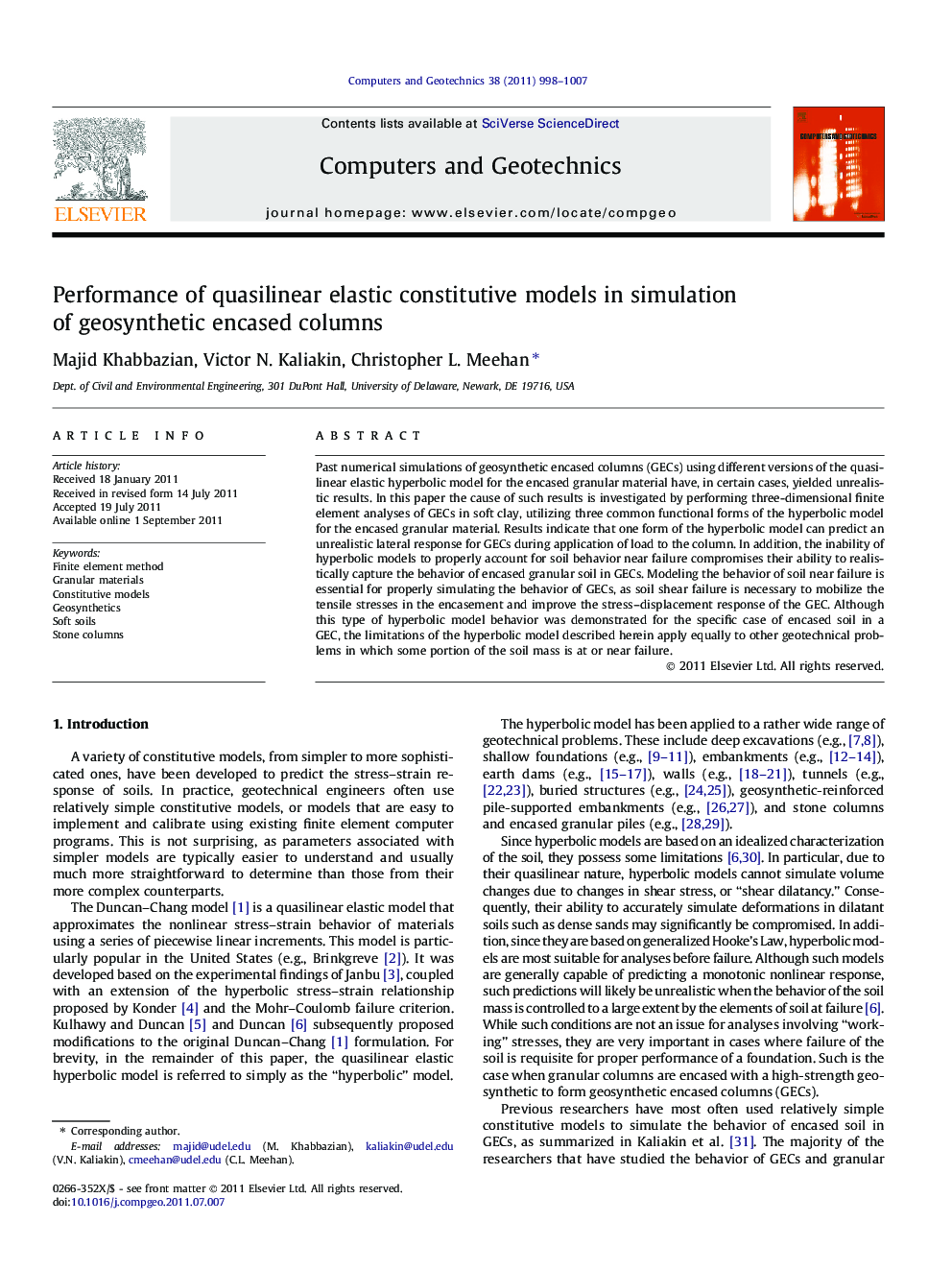| کد مقاله | کد نشریه | سال انتشار | مقاله انگلیسی | نسخه تمام متن |
|---|---|---|---|---|
| 255111 | 503349 | 2011 | 10 صفحه PDF | دانلود رایگان |

Past numerical simulations of geosynthetic encased columns (GECs) using different versions of the quasilinear elastic hyperbolic model for the encased granular material have, in certain cases, yielded unrealistic results. In this paper the cause of such results is investigated by performing three-dimensional finite element analyses of GECs in soft clay, utilizing three common functional forms of the hyperbolic model for the encased granular material. Results indicate that one form of the hyperbolic model can predict an unrealistic lateral response for GECs during application of load to the column. In addition, the inability of hyperbolic models to properly account for soil behavior near failure compromises their ability to realistically capture the behavior of encased granular soil in GECs. Modeling the behavior of soil near failure is essential for properly simulating the behavior of GECs, as soil shear failure is necessary to mobilize the tensile stresses in the encasement and improve the stress–displacement response of the GEC. Although this type of hyperbolic model behavior was demonstrated for the specific case of encased soil in a GEC, the limitations of the hyperbolic model described herein apply equally to other geotechnical problems in which some portion of the soil mass is at or near failure.
► 3-d Numerical simulations of a single geosynthetic encased column (GEC) are presented.
► Performance of three hyperbolic models (HMs) in simulation of GECs is examined.
► HMs are incapable of properly accounting for shear induced volume changes.
► HMs yielded significantly different results as compared to Single Hardening model.
► In some cases, HMs yielded physically unrealistic results.
Journal: Computers and Geotechnics - Volume 38, Issue 8, December 2011, Pages 998–1007